The production of silk has its origins in China, dating back to prehistoric times, as far back as the Neolithic period. The use of silk was limited to East Asia until the Silk Road was opened in the Western Han Dynasty, after which silk production was monopolized by China for a thousand years.
Today, silk has become quite common. It also has become a part of our lives. In this post, I will guide you to some of the most popular types of silk fabrics. Let’s take a look!
1. Types and features of silk fabric
1.1 Satin silk
Features
Satin silk has a fine texture and a soft, silky feel. It has fronts and backs. The front is smooth and sensitive, with nice color brilliance. The opposite side is simple and non-glossy, with a visible and distinct texture. Satin silk is a famous and widely used type of silk fabric.
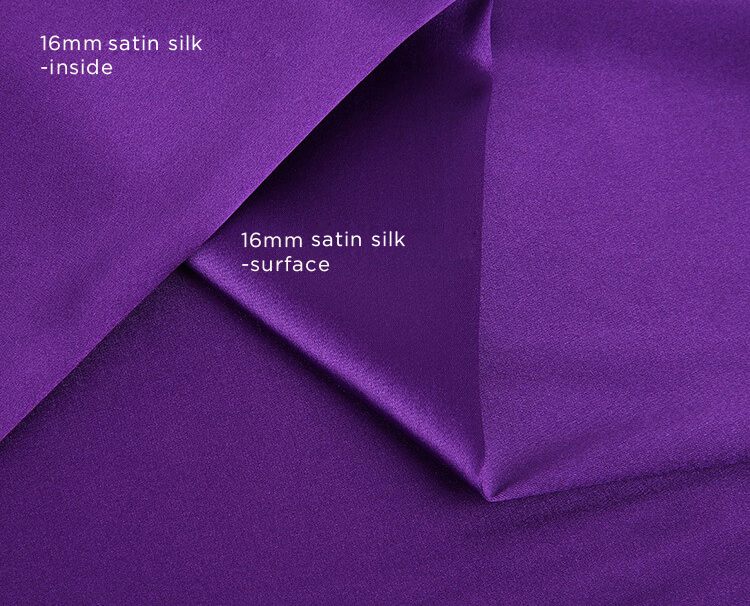
Stretchy satin silk is a type of silk fabric with stretch that is made up of 95% silk and 5% spandex. Usually, silk materials do not have any elasticity. Including 5% spandex improves the stretchiness of the silk fabric and makes it more pleasant to wear.
General thickness
For the silk fabrics, the unit of thickness is Momme or mm. The quality of silk fabrics will be higher with higher Momme.
The thickness of 12mm is considered translucent and thin. Accessories like eye masks and scarves are made from it. The most economical is 16mm. It’s light, but it won’t let you see through if you wear it alone. So, if you’re searching for the most economical option, then 16mm would be the ideal choice.
The thickness of 19mm is slightly more than the 16mm with a clear texture. Usually, positioned in the mid-end. Moreover, heavyweight satin silk is 30mm and 40mm. It is superior in texture and thickness as compared to others. It is usually positioned at the high-end.
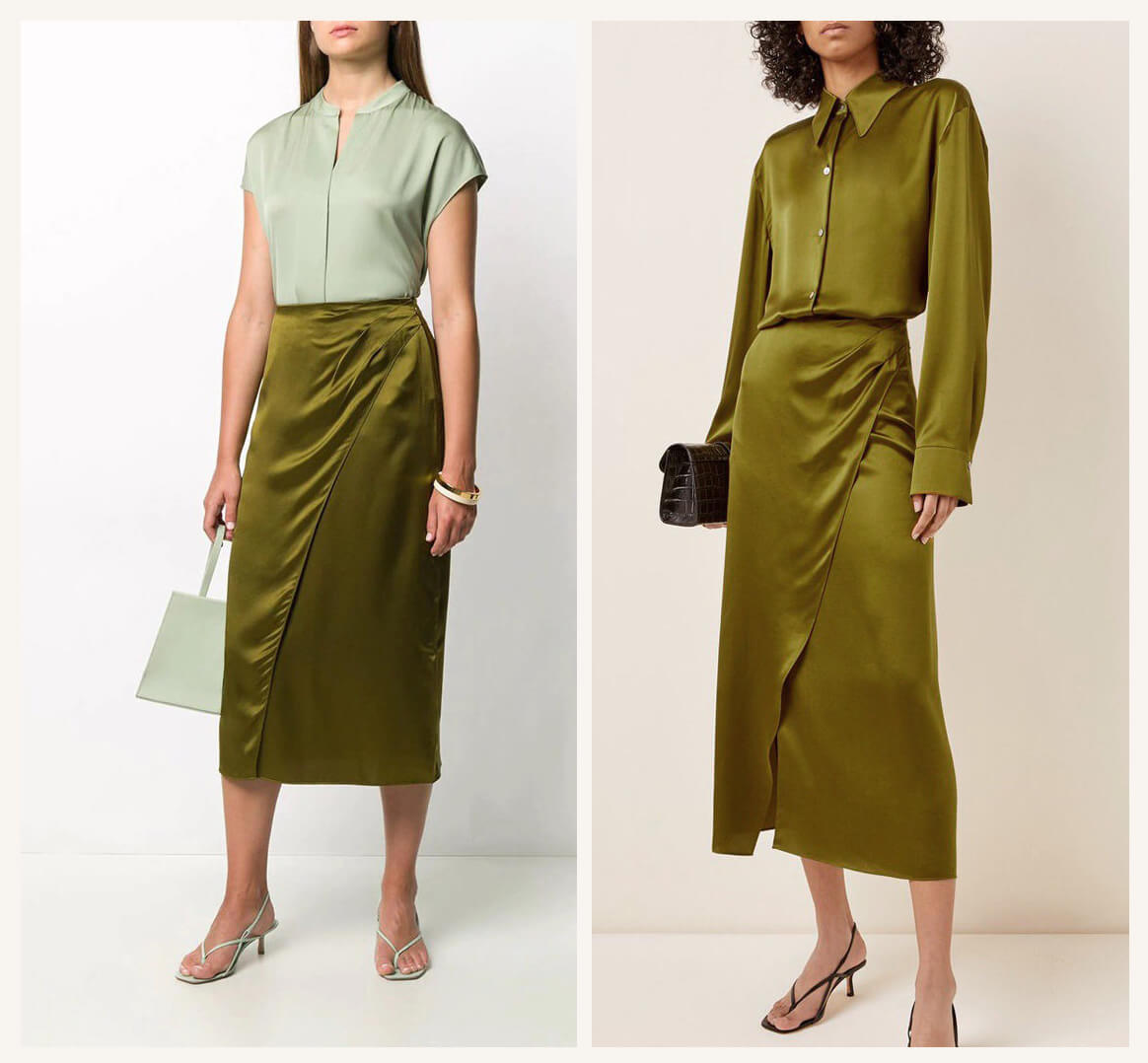
1.2 Crepe de chine silk (CDC)
Feature
Crêpe-de-chine is a simple and pure-weave fabric with a crimped texture on both sides and a dull shine. As a result, crepe silk fabric has no front and back sides. Crepe silk has a delicate pearl sheen on its surface. It’s light and airy. Crêpe-de-chine is a delicate fabric with a wonderful drape that is ideal for summer dresses, blouses, camisole tops, and lingerie.
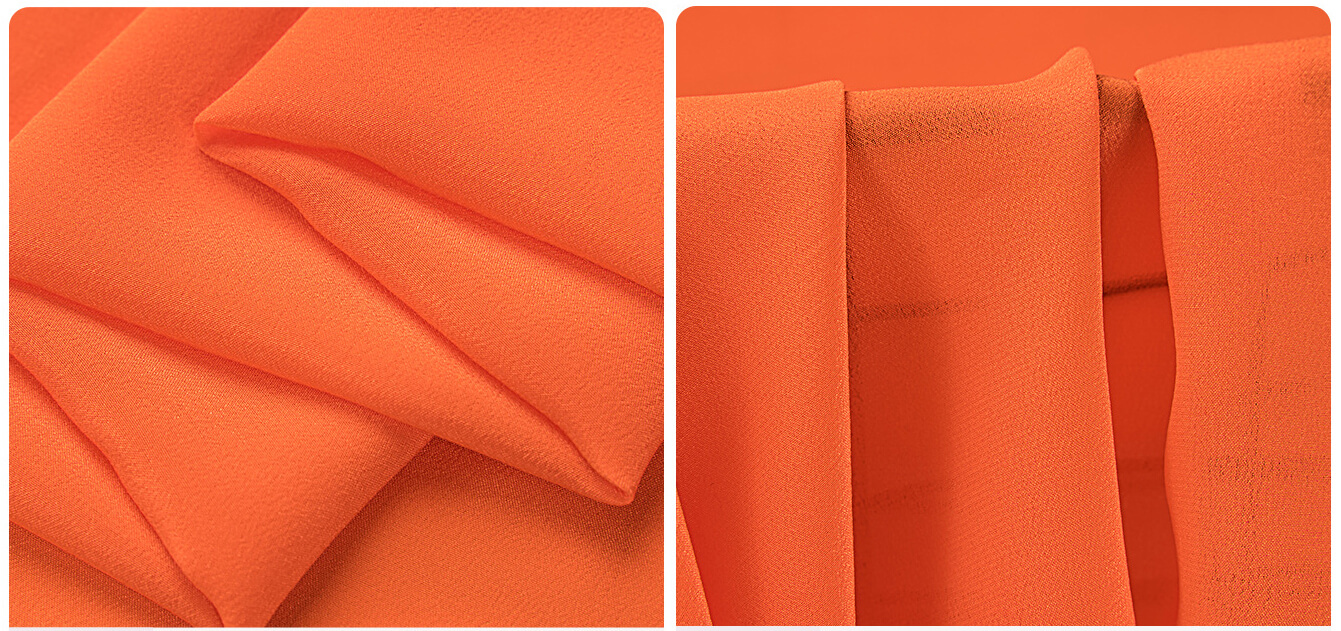
General thickness
12mm and 14mm are quite thin, having a single transparent layer of cloth. If you want your outfit to be light or sexy, you may pick between these two thicknesses.
On the other hand, 16mm and 18mm are thicker and may be combined to make a single layer of clothing.
Heavy crepe is silk that is 30mm and 40mm thick. Fabric thickness is thicker, making it ideal for silk clothes in the autumn and winter.
The shrinkage of the crepe silk significantly happens after washing. It has a 10% shrinking rate. As a result, I advised treating the cloth initially to guarantee that it would not shrink when the garment was finished.
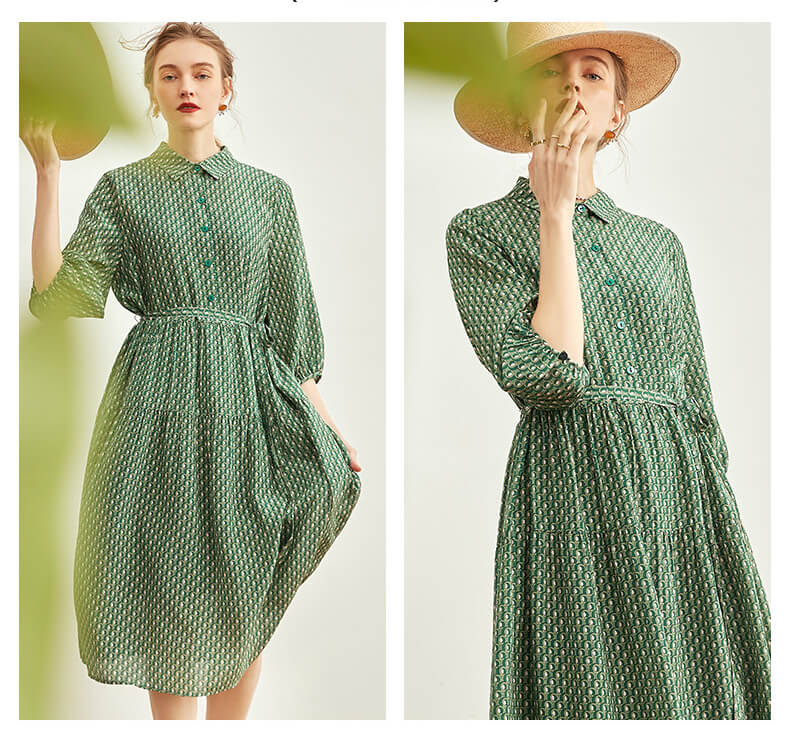
1.3 Georgette silk (GGT)
Feature
Georgette silk is a transparent, delicate, plain-weave fabric with a coarse feel made from finely twisted yarns. Georgette is a thicker fabric than chiffon, yet it has the same features as chiffon is not creasing and keeping a wonderful drape.
The 8mm georgette is ideal for sarongs since it is lightweight, soft, and comfortable. Because Georgette fabric is thin, I suggest layering it or adding a liner if you’re making a garment.
Georgette fabric has a matte finish. The cloth is heavily coated with beautifully detailed creases and visible sand holes. Its thin texture, flowing transparency, softness, breathability, and superb suitability distinguish it. It looks and feels like chiffon, yet it lacks the brilliance and smoothness of chiffon.
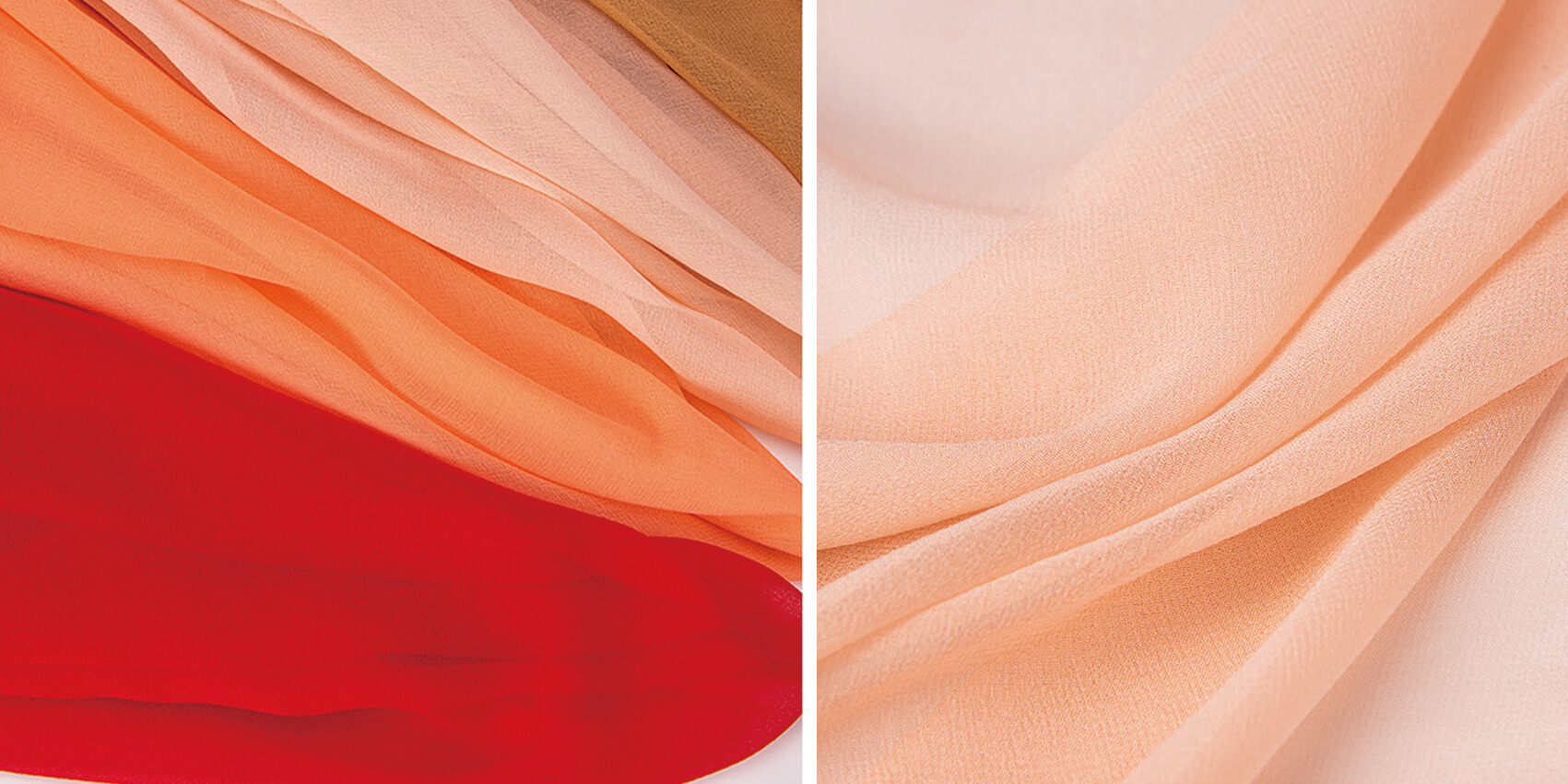
General thickness
8mm, 10mm, 12mm, and 14mm are the four main thicknesses of georgette. Overall, they are all quite thin and clear. Compared to other thicknesses, 8mm and 10mm are more transparent. Therefore, these two thicknesses are in great demand. The 12 and 14-mm thicknesses are somewhat thicker.
There is also a thicker georgette available on the market, namely a 23mm heavy georgette that is not transparent and drapes wonderfully.
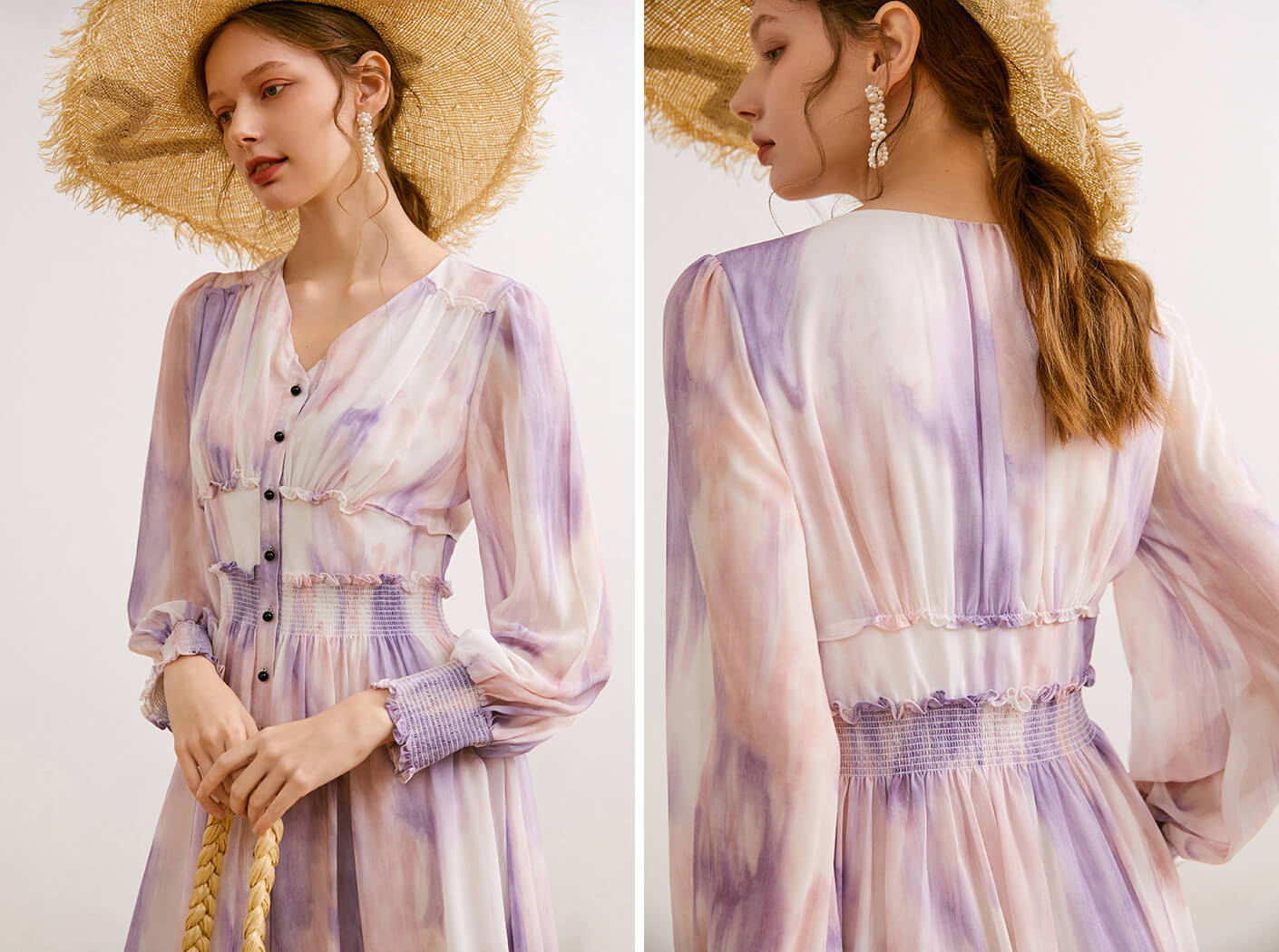
1.4 Habotai silk
Feature
Habotai is a sleek, shiny plain-weave fabric that is extremely lightweight with a soft touch. The raw silk used for lining comes in weights ranging from 5mm to 8mm.
Habotai silk has a compact and delicate texture with no front or back. It’s not as brilliant as satin, not as glossy like crepe, or matte like georgette. Habotai silk is soft, but it is not as smooth and delicate as satin silk since it is not satin; in other words, it is a standard fabric compared to different varieties of silk.
The most notable characteristic of habotai silk is its excellent shading. As a result, it’s more often found in textile linings.
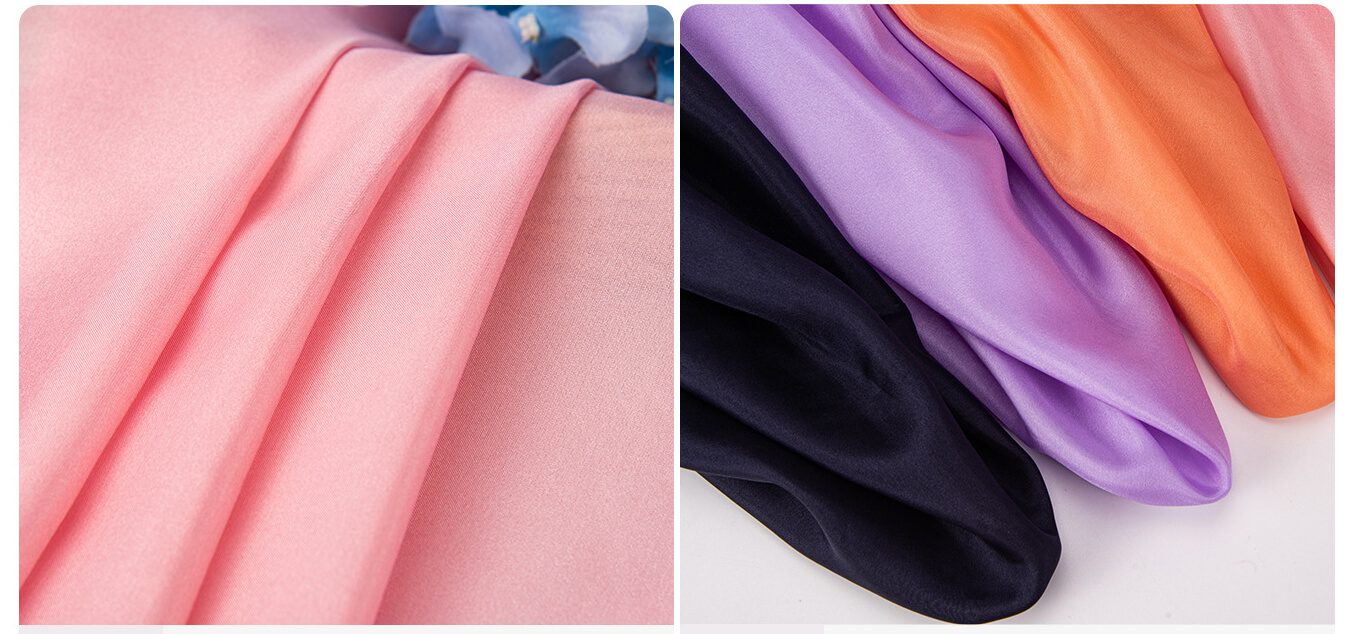
General thickness
Habotai silk is available in the market with thicknesses including 8mm, 10mm, 12mm and 14mm. However, 8 and 10mm are the most commonly utilized. Concerning other silk materials, habotai shrinks quite minimally. It is identical to satin silk, with a 3 to 5% shrinkage rate, and the fabric does not alter much after shrinking. As a result, generally we don’t do shrinkage treatment for habotai. Of course, if you have high requirements for fabric shrinkage and feel. I suggest doing a shrinkage process.
1.5 Organza silk
Feature
Organza silk is a lightweight, delicate, fine, open-weave fabric with a silky shine. However, its material is thin; the finely twisted threads make it tough and resistant.
Other silk textiles are softer than organza silk. It’s a little stiff, so it’s better for constructing trendy apparel. It has the potential to improve the shape’s puffiness. Organza is used in many attractive and trendy fashions on the market. Georgette, satin, and crepe are all very soft and made of ripe silk. Organza is made from raw silk and therefore stiffer, making it a good choice for bridal gowns. As a result, organza clothing is simple to plasticize and has some rigidity.
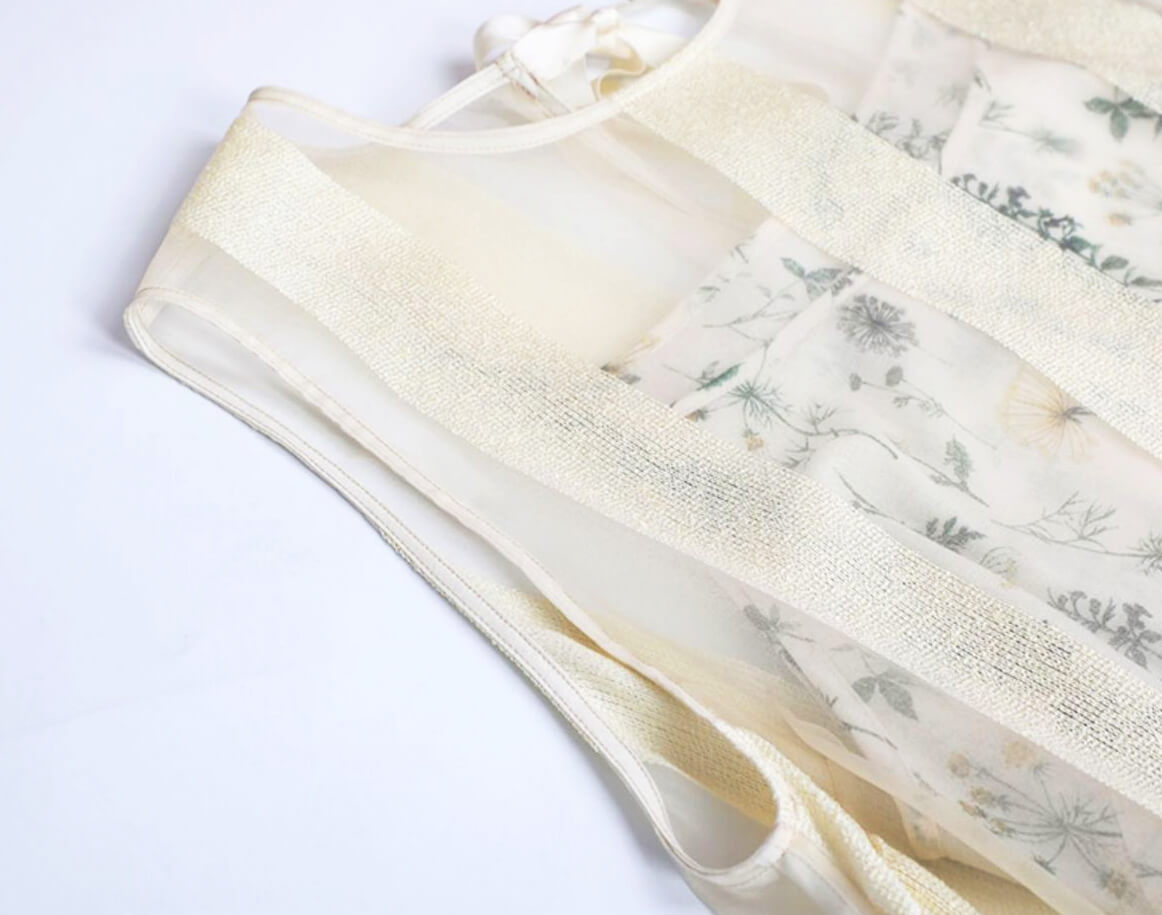
General thickness
The available thicknesses of the organza include 5mm, 8mm, 12mm, 14mm and 16mm. With the increase in thickness, you can see the decrease in transparency and increase in stiffness.
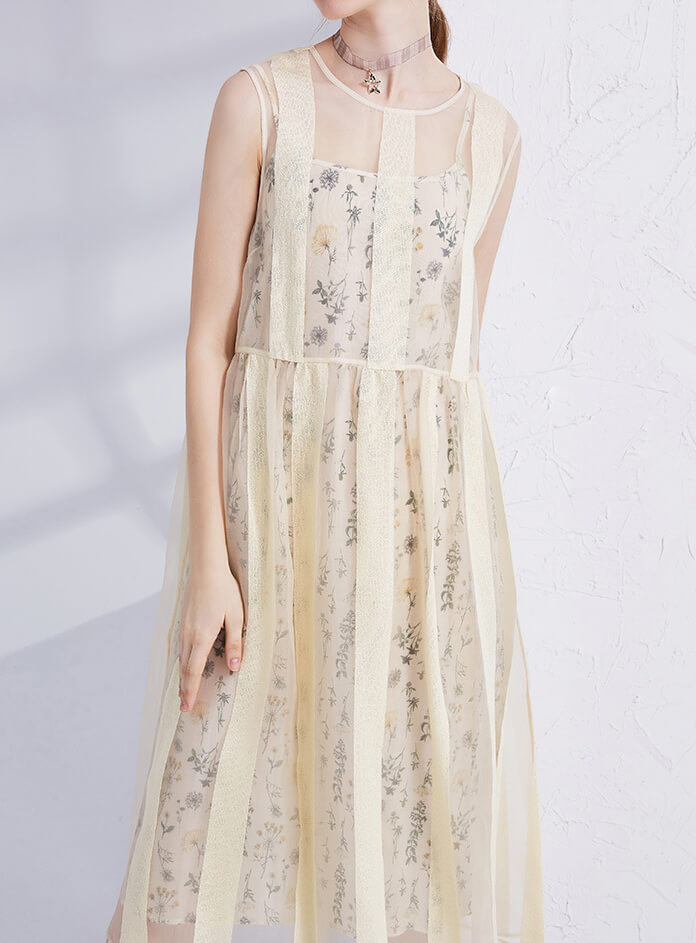
1.6 Chiffon silk
Feature
A wonderful drape and light, exquisite fabric with a little rough gauze-like feel. Chiffon silk is a lightweight fabric with modest flexibility, made from small twisted threads.
Silk chiffon is made entirely of silk, and it resembles polyester chiffon in appearance. It is weaved with plain tissue, has a low warp and weft density, and tiny little pores on the silk surface. Soft and translucent, light and airy, smooth and delicate Although it has the appearance of chiffon when compared to polyester chiffon, silk chiffon has superior quality, is cooler and breathable, and has greater moisture absorption for human skin.
This fabric is ideal for layering and adding volume. A chiffon covering offers a gorgeous flowing effect and is often used for special events and wedding gowns. Scarves, blouses, and shirts are further examples.
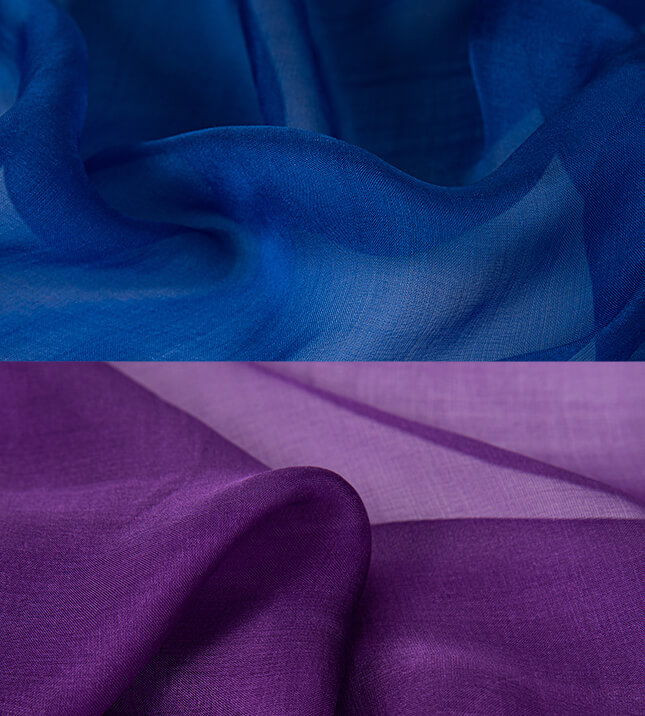
General thickness
The available thicknesses of the chiffon silk include 5mm, 8mm, 10mm, and 12mm. The mainly used thickness are 5mm and 8mm. On the other hand, 10mm and 12mm are rare and and are usually replaced directly by georgette.
1.7 Cotton silk
Feature
Cotton silk is a great pick. When the two fibers are spun together to generate a combination yarn, this combination is formed. So the silk may be twisted onto the cotton. The fabric created by combining silk and cotton has a subtle shine and is more lasting than silk fabric. On the other hand, cotton silk is not as silky as silk fabric.
General thickness
Currently, cotton silk is available in three thicknesses, including 9mm, 12mm, and 16mm. As compared to 100% silk fabric, it is relatively less expensive. If 100% silk fabric is out of your price range, cotton silk is an excellent alternative.
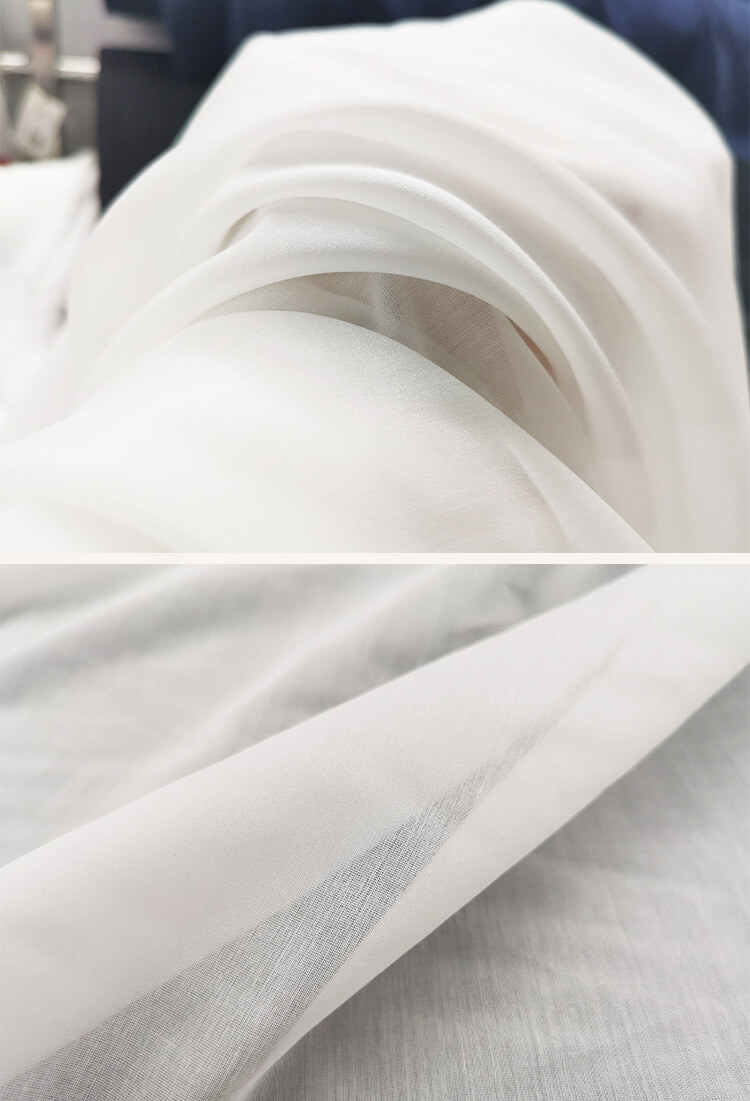
1.8 Twill silk
Feature
Twill silk is a fabric that is organized in a twill pattern. The cloth surface features a distinct oblique design. It’s smooth, shiny, and stretchy. However, relative to plain cloth, it shrinks more. Even while twill silk is delicate, it pales compared to plain satin and crepe silk. Twill silk is stronger and more bone-like.
General thickness
Thickness, including 12mm, 16mm, and 19mm, are commonly used. For lining, scarves, ties, and other accessories, 12 mm is commonly used. Moreover, 16 mm and 19 mm have more outstanding quality and may be used for clothes directly.
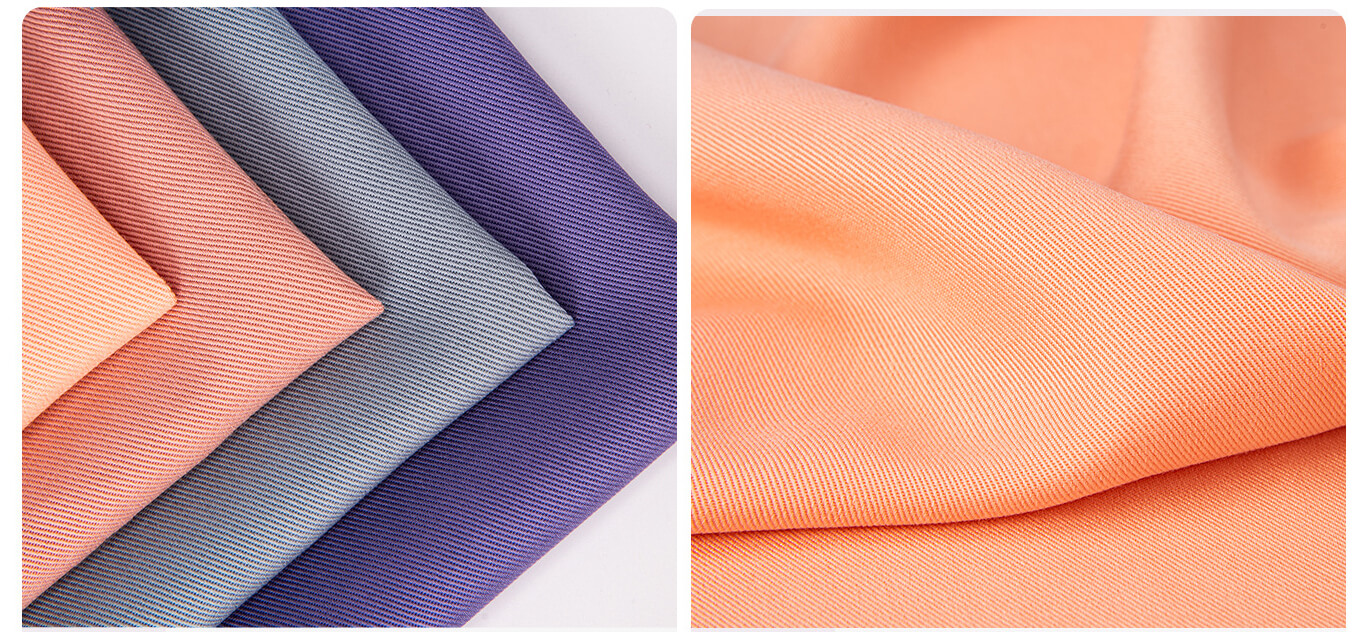
2. How to tell if the silk fabric is real or fake?
The burn test isn’t an approach that I suggest unless you’re willing to risk totally trashing your silk fabric. Still, the precision of the results can’t be surpassed.
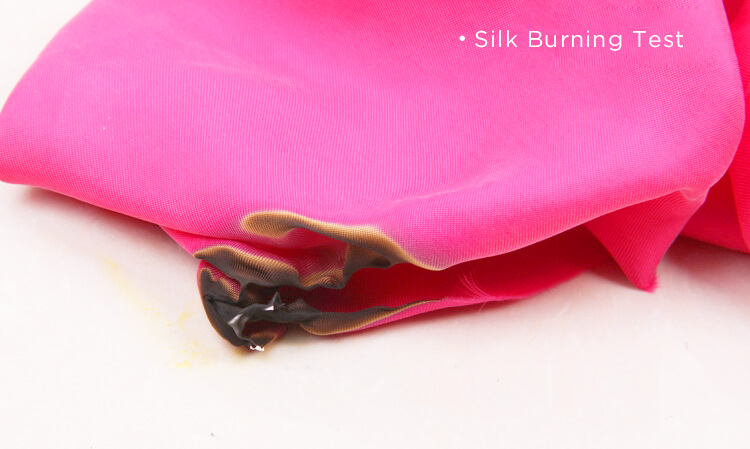
Gently apply a lighter to your material, and relying on your sense of smell, you’ll be able to distinguish between the smells of burning genuine silk and burning imitation textiles. When burned, natural silk emits brittle ash that smells like burning hair. The burning will be stopped once the flame is extinguished. Remember, it’s not genuine silk if there’s no ash and it smells like burning plastic.
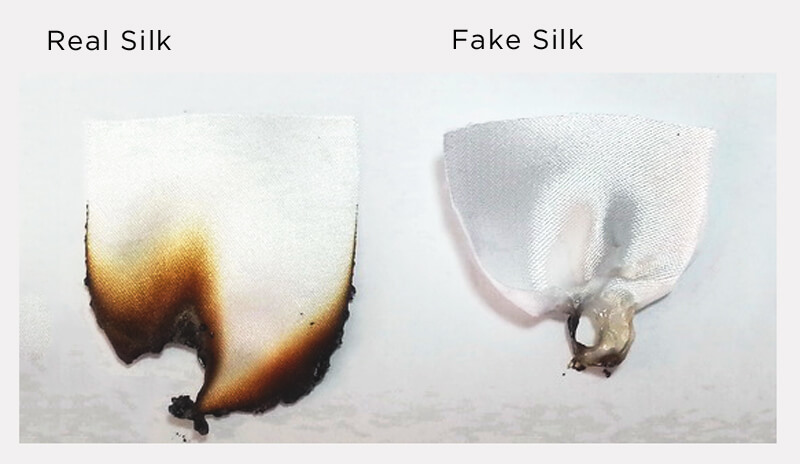
3. Great benefits of silk fabric
What is the total number of silk clothes you already have? Are you used to sleeping on silk bedding at night? The reality is that most of us do not own many items made entirely of silk cloth. Natural silk is an expensive fabric. However, I believe the expensive rate is totally justified. Because silk cloths have several benefits.
3.1 Extremely soft
Silk is very soft and pleasant to touch, and the surface of the silk fiber is very smooth. Even delicate skin is not irritated, and you perceive as if you are not wearing anything at all. It gently massages your body. I wake up feeling like I slept on a cloud whenever I sleep on a silk sheet and pillowcase.
3.2 Free of any chemicals
Silk is made up of only natural substances, so it can be said that it is pure and does not contain any chemicals. You can also observe similarities between human hair and silk fiber. The silk composition includes protein 97%, fat 3% and wax. Approximately 18 amino acids are present in the silk that are beneficial for a person’s skin.
3.3 Hypoallergenic
Silk is the most hypoallergenic among all fabrics, which means it is the least likely to cause allergic reactions. It resists allergens like mold, dust mites, and fungus.
3.4 Protect your skin
Silk helps to prevent skin from losing moisture. Moreover, it also acts as an antiaging. It prevents flaky, dry skin conditions by locking moisture in, ensuring that it remains on your skin.
3.5 Warm in winter, cool in summer
You will feel cool by wearing silk on hot days because of the property of silk to preserve your body heat in the cold. Silk will provide thermal balance by appropriately adjusting to the body temperature.
3.6 Moisture-wicking
It is the property of the silk that it quickly dries and is an excellent absorbent. It absorbs up to 30% of its own weight in moisture while remaining dry to the touch. Simultaneously, the expansion of silk thread and efficient air circulation facilitate quick evaporation of excess moisture. That’s why silk fabric absorbs sweat while allowing the skin to breathe.
3.7 Natural hair conditioner
Silk bedding keeps your hair hydrated and tangle-free; your hair does not bunch and twist on silk pillowcases, rather gliding over the surface.
3.8 Non-static easily
Because silk does not readily produce a static charge, it does not stick to your body or iron when you press it.

Silk is quite flexible. It’s suitable for a wide range of applications, including casual apparel, soft bedding, classic decoration items, formal dress, evening wear, and sometimes parachutes and carpets can be made from it. You can sew almost any type of clothing out of silk fabric. It nicely absorbs color and blends well with natural fabrics such as cotton, wool, and linen. In the past, China knows the secret of silk production. Nowadays, many countries, including Brazil and India, produce silk fabric in India, Brazil and other nations; China is still the world’s greatest silk manufacturer.
I adore natural silk and would want to motivate you to do the same. It’s been called “Queen of Textiles” for thousands of years since it’s such a lovely, breathable, and elegant fabric.
Want to know more about the truth about silk? Are you interested in developing a silk clothing line for your brand? Please don’t feel hesitate to get in touch with us. Sending us your design today, and we will offer you the quotation tomorrow.
